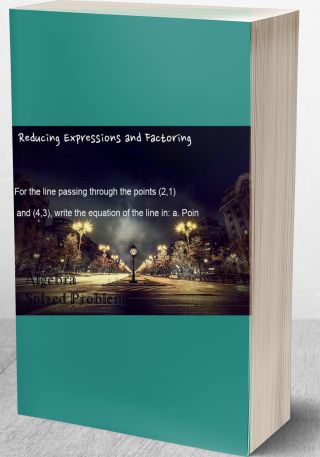Quantum tunneling. At temperatures approaching absolute zero (273 degrees below zero Celsius), heliu
Question: Quantum tunneling. At temperatures approaching absolute zero (273 degrees below zero Celsius), helium exhibits traits that defy many laws of conventional physics. An experiment has been conducted with helium in solid form at various temperatures near absolute zero. The solid helium is placed in a dilution refrigerator along with a solid impure substance, and the proportion (by weight) of the impurity passing through the solid helium is recorded. (This phenomenon of solids passing directly through solids is known as quantum tunneling.) The data are given in the table.
HELIUM
Proportion of Impurity
Passing Through Helium Temperature
y x (°C)
.315 -262
.202 -265
.204 -256
.620 -267.715 - 270
.935 -272.957 -272
.906 -272
.985 -273
.987 -273
(a) Construct a scattergram of the data.
(b) Find the least-squares line for the data and plot it on your scattergram. Define \({{\beta }_{1}}\) in the context of this problem.
(c) Test the hypothesis (at ![]() = .05) that temperature contributes no information for the prediction of the proportion of impurity passing through helium when a linear model is used. Draw the appropriate conclusions.
= .05) that temperature contributes no information for the prediction of the proportion of impurity passing through helium when a linear model is used. Draw the appropriate conclusions.
(d) Find a 90% confidence interval for \({{\beta }_{1}}\). Interpret your results.
(e) Find the coefficient of correlation for the given data.
(f) Find the coefficient of determination for the linear model you constructed in part b. Interpret your result.
(g) Find a 99% prediction interval for the proportion of impurity passing through helium when the temperature is set at -270°C.
(h) Estimate the mean proportion of impurity passing through helium when the temperature is set at -270°C. Use a 99% confidence interval.
Type of Deliverable: Word Document


![[Solution] Color analysis of Saturn's moon. High-resolution images of Iapetus, one of Saturn's largest moons, w #2295 Confidence Intervals](/images/downloads-images/featured/Statistics-question-2294.jpg)
![[Solved] Ten students who initially scored low on the verbal portion of the SAT and 10 who initially scored h #29352 Hypothesis Testing](/images/downloads-images/featured/Statistics-question-4518.jpg)
![[Solution] The marketing department of a manufacturing company wanted to find out how many blank video cassette #22330 Hypothesis Testing](/images/downloads-images/featured/Statistics-question-10944.jpg)
![[Solution] The Oak Harbor School used the Dumbarton University Math Battery (DUMB) to test the math achievement #18616 Other Statistics](/images/downloads-images/featured/Statistics-question-4121.jpg)

